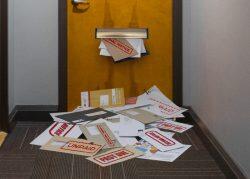New York is going back to normal. Landlords feel left behind.
Tuesday marked a major milestone for the state when Gov. Andrew Cuomo lifted nearly all remaining social distancing mandates and other safety precautions, some 16 months after pandemic-related lockdowns began.
Dining out? Feel free to squeeze in next to strangers. Run a gym? Hourly disinfecting is now optional.
Why, then, ask New York’s landlords, do tenants need 10 more weeks of an eviction moratorium?
On the heels of Cuomo’s announcement, the Rent Stabilization Association — a group representing New York City landlords — called on the governor to end pandemic-era protections for renters by immediately rolling back the residential eviction moratorium, reopening housing courts and encouraging tenants to pay their rent.
In May, state lawmakers voted to extend the eviction moratorium through August 31. That measure required Cuomo’s signature, though any modification of the ban would likely first need to go through the state legislature as well.
While tenants have struggled during the pandemic and arrears have mounted — over $2 billion in federal funds are intended to alleviate that debt — landlords say they’ve been hurt, too, but have received little help from the government.
Property owners, some staring down 12 or more months of unpaid rent, are buried in back property taxes, water bills and mortgage payments, said RSA president Joseph Strasburg.
“Landlords were left out of the economic relief equation during the pandemic,” said Strasburg and RSA chairman Aaron Sirulnick in a joint statement. “Now, government says everything is back to normal — except for rental property owners — and that is totally unacceptable,”
For many New York tenants, life has not returned to normal. The state’s rent relief program got off to a late start, finally opening on June 1, months after neighboring states. The portal launched with glitches and heavy demand. Nonprofits helping with applications created call-back lists for tenants during the first week.
“If the volume continues this way, we may not be able to get to everybody,” said Lakisha Morris, operations director at Catholic Charities, one of the nonprofits helping guide tenants through the program.
Relief checks should reach renters four to eight weeks after their application goes through, meaning many tenants won’t see those funds until August or later. The eviction moratorium is currently set to expire on August 31.
Through the end of June, the state will prioritize applications from the most vulnerable tenants, such as those who are unemployed or have household incomes below 50 percent of the area median. After that, the portal opens to all who are eligible. But some nonprofits say the money won’t last that long.
“Assuming most people have around $20,000 in arrears and based on a $2.4 billion pot statewide, that would mean relief for about 200,000 people,” said Scott Short, CEO of the non-profit RiseBoro. “There were 22,000 people just in New York City who applied on the first day. So yeah, it seems like we’re gonna run out of money.”
Tenant advocates fear the end of the moratorium — even on its expected sunset date — will bring a flood of eviction filings and a rise in homelessness.
Read more


